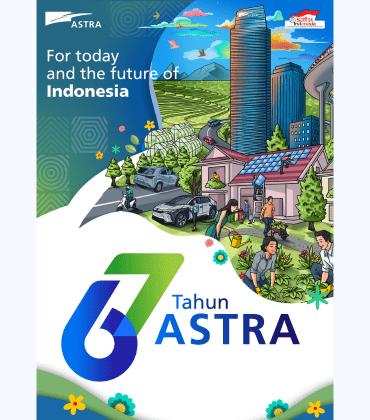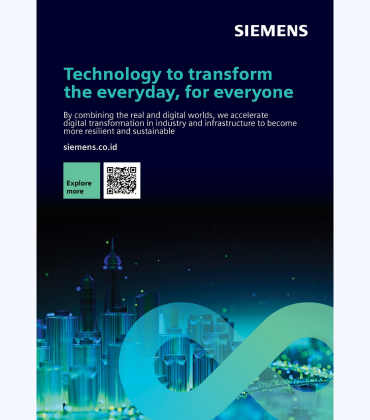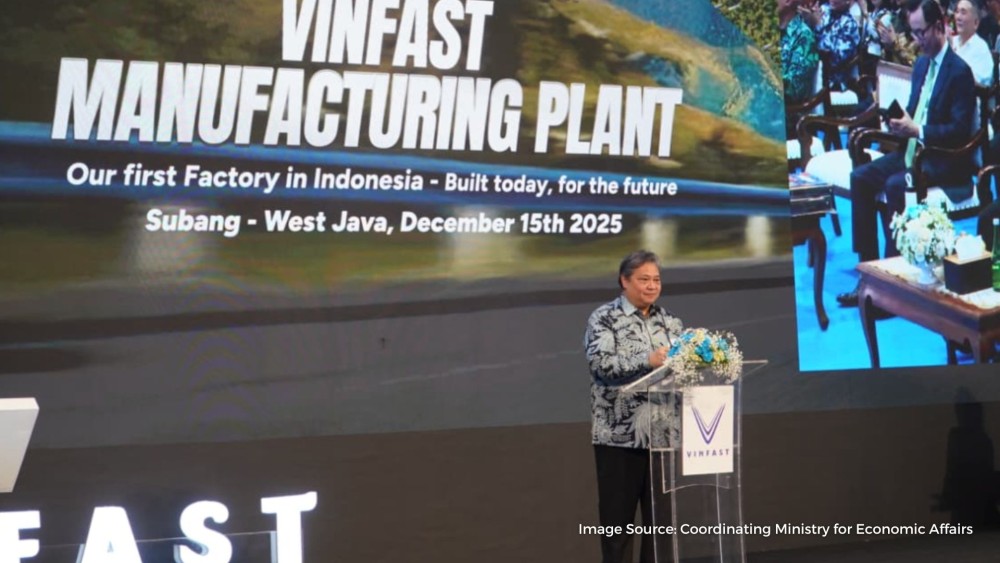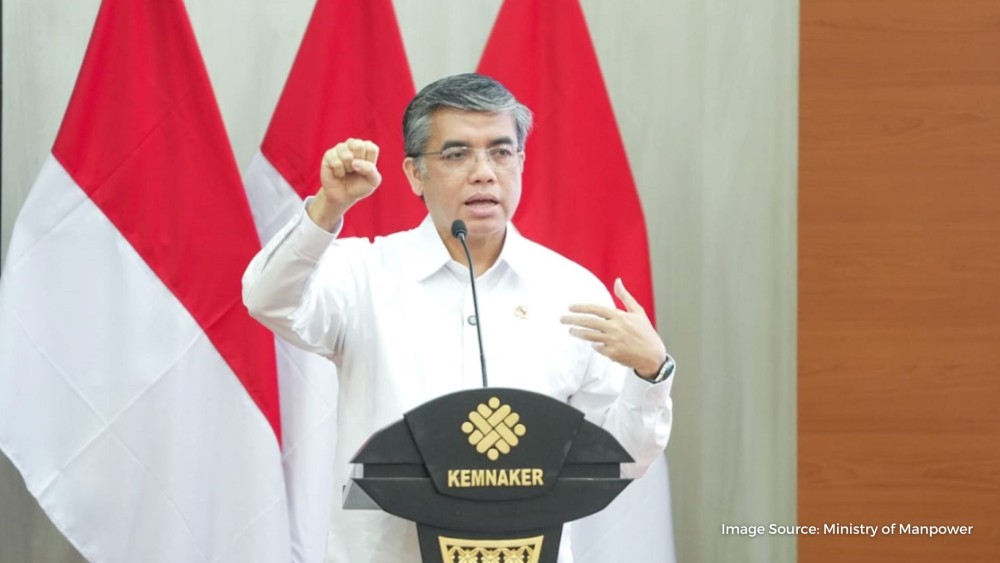Indonesia is the fourth most populous country in the world and is currently experiencing a period of optimism and robust consumption growth. Despite a population of over 285 million people, with 63.44% aged between 20–75 years, the country still exhibits relatively low car ownership. Only around 99 cars per 1,000 people are owned in Indonesia, compared to 275 in Thailand and 490 in Malaysia as of 2024, according to the International Organization of Motor Vehicle Manufacturers (OICA). This represents a clear opportunity for investment in the automotive sector.
Indonesia's economy grew by 5.03% in 2024, slightly down from 5.05% in 2023, reflecting a successful recovery from the COVID-19 pandemic. With a rapidly expanding middle class and an abundant, cost-effective labor force, it is no surprise that global automotive companies are increasingly focused on the Indonesian market.
In 2024, car production in Indonesia reached 1.196 million units, with retail sales totaling 1.014 million units. Passenger cars accounted for over 90% of the sales, and the majority of the industry is concentrated on the island of Java, particularly in the Jakarta area, according to the Association of Indonesian Automotive Manufacturers (GAIKINDO).
Japanese car manufacturers, led by Toyota with around 32% market share, dominate the sector, holding nearly 90% of the market. However, Chinese brands such as BYD, Chery, and Wuling have emerged as strong competitors, growing their market share to about 10% from almost zero in just a few years. This growth is largely due to Indonesia’s aggressive push to develop an electric vehicle ecosystem, from manufacturing car batteries to producing electric vehicles. The country has successfully attracted investments from South Korean companies like LG and Hyundai, along with Chinese automakers.
Indonesia is increasingly well-positioned to support a complete automotive supply chain. The country benefits from a relatively young and affordable labor force, abundant natural resources, and proximity to the massive markets of India and China. Furthermore, its membership in the Association of Southeast Asian Nations (ASEAN), with a combined population of over 670 million, enhances its strategic position.
While the relationship between Indonesia and other ASEAN members is often viewed as competitive, it should instead be seen as a partnership. In contrast to Thailand’s focus on commercial vehicles (like the 1-ton pickup truck), Indonesia’s automotive industry is primarily centered on passenger cars, which make up around 70% of its production. As of now, Indonesia is one of Thailand's closest trading partners in the automotive sector.
Looking ahead, the combination of a growing market, low car penetration, emerging consumption patterns, and Indonesia’s strategic position in ASEAN will continue to attract global automakers. However, challenges persist. Business in the automotive sector in Indonesia can be complex due to issues such as burdensome administrative procedures, technical regulations, high import duties, inadequate infrastructure, a lack of testing facilities, and limited fiscal incentives—all of which have slowed industry development.
Indonesia’s ambition to expand its automotive production and become a regional hub depends heavily on addressing infrastructure gaps. Key infrastructure areas such as roads, electricity supply, and ports remain weak points, and significant upgrades will be essential for supporting the country’s broader industrial capacity.
Another challenge lies in the Indonesian labor market. Although the labor force is abundant, young, and relatively inexpensive, recent increases in the minimum wage have raised production costs. For instance, in 2013, the minimum wage in the automotive sector increased by 45% in Jakarta and 30% in Bekasi. It’s important to note, however, that the minimum wage in the automotive sector is regulated at the provincial level, which can create disparities across regions.
In addition, companies face challenges from tariffs and, more notably, non-tariff trade barriers (NTBs). Fuel quality in Indonesia, for example, still doesn’t meet international standards, with high lead content in gasoline and high sulfur content in diesel. These conditions require automakers to adapt their products to local standards, complicating market entry.
Compliance with Indonesian National Standards (SNI) has also become burdensome for foreign businesses. Obtaining the SNI mark and number for products often involves complex testing procedures and a limited number of certified facilities. Additionally, domestic automotive standards that differ from international ones can create technical barriers to trade (TBTs) and NTBs, which complicate bilateral trade between Indonesia and other countries. However, the ASEAN initiative to harmonize regional automotive standards based on UN/ECE regulations (through the ASEAN Mutual Recognition Agreement on type approval) promises to simplify trade and improve product quality, particularly in terms of environmental and safety standards.
Indonesia's large domestic market, strong economic growth, and developing industrial sector provide a solid foundation for continued growth in automotive sales. Assembling vehicles locally helps reduce production costs due to lower tax rates and the availability of local components, enhancing price competitiveness and driving sales. The increase in local suppliers has also led to greater expansion in the automotive production sector, further stimulating growth in the components industry.
The positive trends in the automotive sector are underpinned by stable economic growth, ongoing investments, and an expanding production capacity. If these trends persist, they will likely fuel further growth in the Indonesian automotive industry.
Looking ahead, several key factors are poised to drive the growth of Indonesia’s car and car component markets. Firstly, Indonesia’s macroeconomic fundamentals remain strong, with GDP growth projections of 5-6% annually, continuing the positive trend of recent years. Secondly, Indonesia’s recent upgrade to an upper-middle-income economy has increased the population’s spending power, particularly on consumer goods. Thirdly, despite impressive economic growth, car ownership remains low, presenting significant opportunities for expansion in car sales, particularly among high-income consumers and those with greater access to credit. Notably, 70% of car purchases in Indonesia are made on credit.
Finally, Indonesia’s geographic and economic ties to the major markets of India and China position it as a potential production hub. Recent large-scale investments by car manufacturers in Indonesia reflect this growing potential, driven by strong domestic sales. This trend is likely to encourage more investments from car component producers, leading to a more robust and complete automotive supply chain. If successful, Indonesia could evolve into a regional hub for automotive production.
This content is done in collaboration with:
Business Sectors








